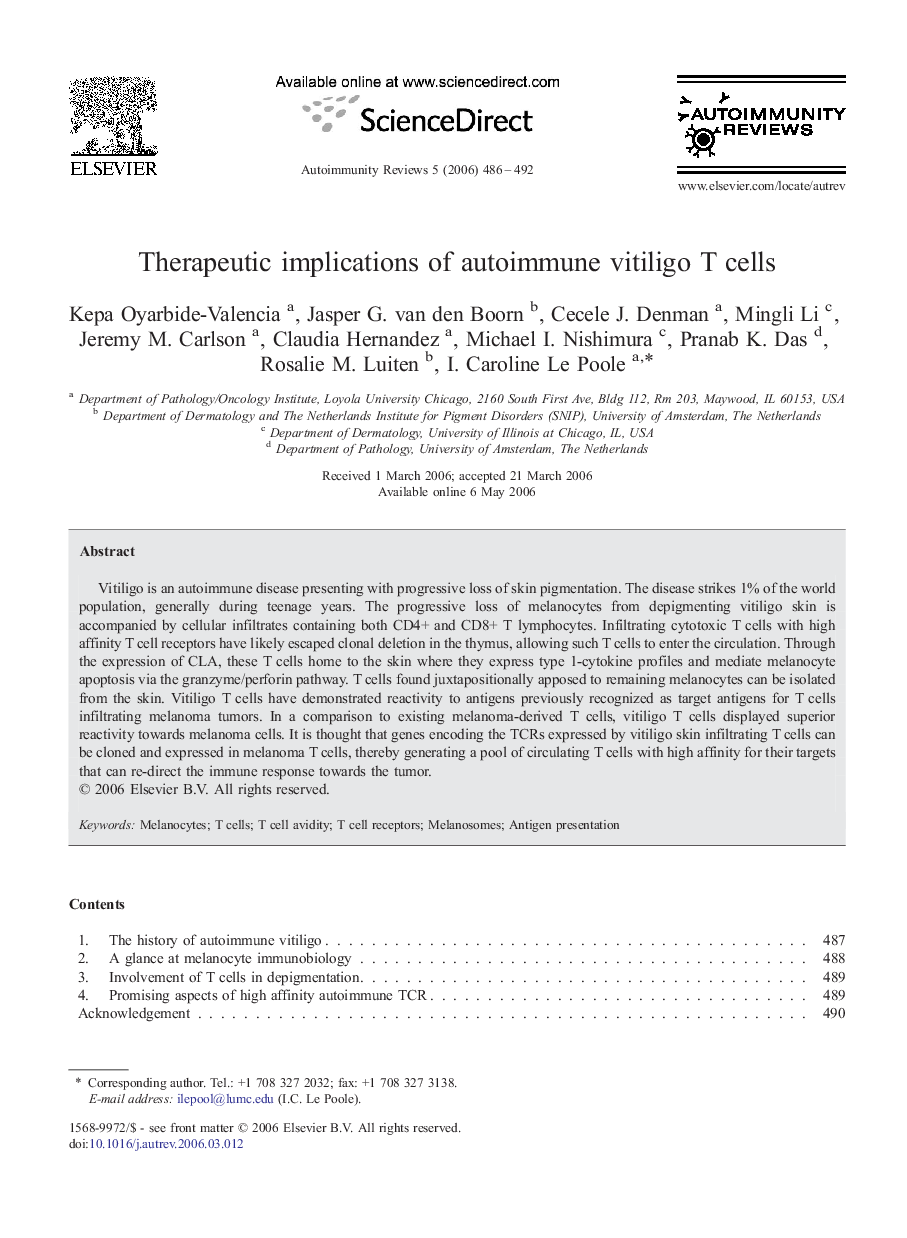| Article ID | Journal | Published Year | Pages | File Type |
|---|---|---|---|---|
| 3342712 | Autoimmunity Reviews | 2006 | 7 Pages |
Vitiligo is an autoimmune disease presenting with progressive loss of skin pigmentation. The disease strikes 1% of the world population, generally during teenage years. The progressive loss of melanocytes from depigmenting vitiligo skin is accompanied by cellular infiltrates containing both CD4+ and CD8+ T lymphocytes. Infiltrating cytotoxic T cells with high affinity T cell receptors have likely escaped clonal deletion in the thymus, allowing such T cells to enter the circulation. Through the expression of CLA, these T cells home to the skin where they express type 1-cytokine profiles and mediate melanocyte apoptosis via the granzyme/perforin pathway. T cells found juxtapositionally apposed to remaining melanocytes can be isolated from the skin. Vitiligo T cells have demonstrated reactivity to antigens previously recognized as target antigens for T cells infiltrating melanoma tumors. In a comparison to existing melanoma-derived T cells, vitiligo T cells displayed superior reactivity towards melanoma cells. It is thought that genes encoding the TCRs expressed by vitiligo skin infiltrating T cells can be cloned and expressed in melanoma T cells, thereby generating a pool of circulating T cells with high affinity for their targets that can re-direct the immune response towards the tumor.
